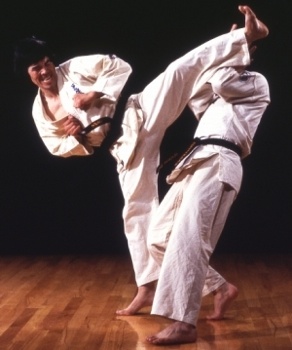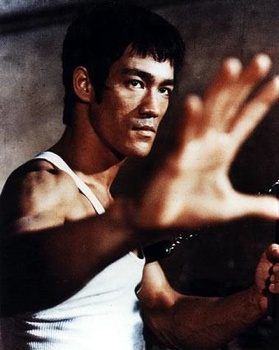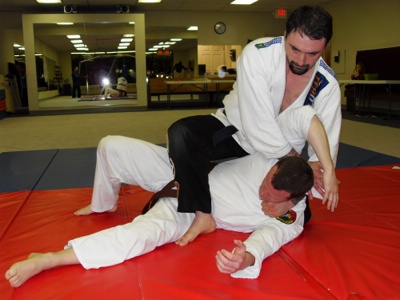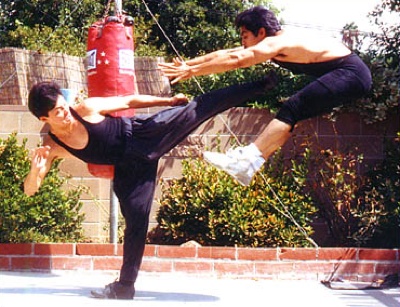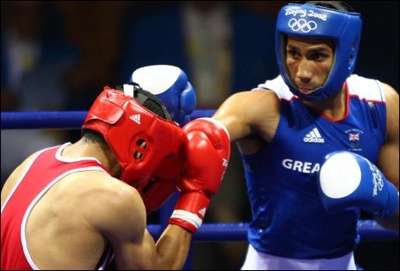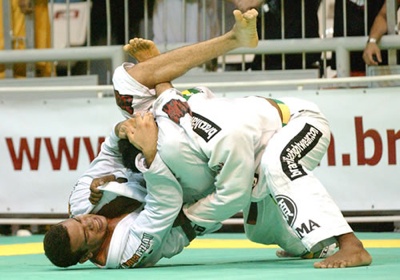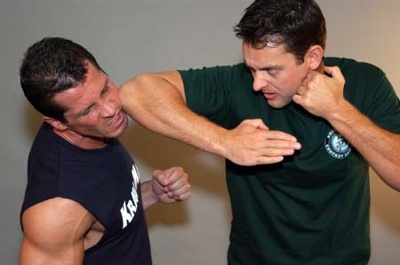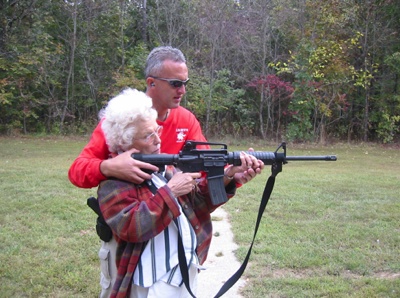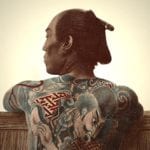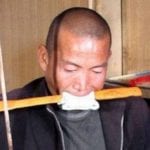 Weird Stuff
Weird Stuff  Weird Stuff
Weird Stuff  Mysteries
Mysteries 10 Tragic Disappearances and Deaths in Joshua Tree National Park
 History
History 10 Ways Childhood Really Sucked in the Old West
 Music
Music 10 Name Origins of Famous Bands from the 1990s
 Religion
Religion 10 Biggest Turnarounds by the Catholic Church
 Weird Stuff
Weird Stuff 10 Unbelievable Times Laws Had Unintended Consequences
 Humans
Humans Ten Historic Women Who Deserve Way More Credit Than They Got
 Movies and TV
Movies and TV 10 Films That Spawned Major Lawsuits
 History
History Ten Times Towns Were Wiped Off the Face of the Earth
 Creepy
Creepy 10 of the Most Disturbingly Haunted Public Houses in the UK
 Weird Stuff
Weird Stuff 10 Niche Subcultures That Are More Popular Than You Might Think
 Mysteries
Mysteries 10 Tragic Disappearances and Deaths in Joshua Tree National Park
 History
History 10 Ways Childhood Really Sucked in the Old West
Who's Behind Listverse?

Jamie Frater
Head Editor
Jamie founded Listverse due to an insatiable desire to share fascinating, obscure, and bizarre facts. He has been a guest speaker on numerous national radio and television stations and is a five time published author.
More About Us Music
Music 10 Name Origins of Famous Bands from the 1990s
 Religion
Religion 10 Biggest Turnarounds by the Catholic Church
 Weird Stuff
Weird Stuff 10 Unbelievable Times Laws Had Unintended Consequences
 Humans
Humans Ten Historic Women Who Deserve Way More Credit Than They Got
 Movies and TV
Movies and TV 10 Films That Spawned Major Lawsuits
 History
History Ten Times Towns Were Wiped Off the Face of the Earth
 Creepy
Creepy 10 of the Most Disturbingly Haunted Public Houses in the UK
Top 10 Martial Arts for Self Defense
Martial arts are great as spectator sports and a good way to get fit, but they really come into their own when they are used in self-defense – undoubtedly the ultimate result for many of them. This list looks at ten of the best martial arts for if you are especially interested in defending yourself against attackers.
SEE ALSO: 10 Insane Martial Arts You’ve Never Heard Of
Firstly, and this is true for all these entries, if you’re on the street and a stranger attempts to mug you, or worse, he most likely doesn’t know any particular fighting style, other than “swing for the fences and keep moving forward.”
There are quite a few offshoots of kickboxing, the most famous of which is Muay Thai, which roughly translates to “art of the eight limbs.”
Kickboxing for self-defense concentrates on its version of punches, knees, and kicks: fast-paced, distracting, and aimed at all available openings. If the attacker has a knife or gun, and is within arm’s reach, he will use the weapon. The defender is thus armed with more weapons, hands, feet, knees, elbows, head.
Simply walk toward the attacker (who has any weapon but a gun), and throw a front kick straight up against his chin as hard as possible. Kickboxing thrives on this sort of move, and teaches the practitioner to execute it with such extreme speed, faster than the attacker can react, that it virtually rules out the risk of “fancy kicks.” Do it correctly and it will almost always break his jaw, crush his larynx, shatter his teeth, force him to bite off his tongue, etc. He will not fight after this. This sort of kick is well trained to the point that it can, in fact, be delivered efficiently, that is, quickly and powerfully, without being telegraphed.
Alternatively, step to the side, grab the attackers weapon arm, and sling your forehead into the his nose. This will not hurt you nearly as much as you think. The attacker’s nose, on the other hand, will shatter like a firecracker.
Well trained kickboxers practice something called “combat qi”,which is the physical conditioning of any part of the body through repeated damage, until it no longer sends sufficient pain signals to the brain to bother the person. Kickboxers will roll a baseball bat handle up and down the shin firmly enough to cause aching, for about an hour a day for 2 years. The tibia is repeatedly damaged and rebuilds itself stronger and thicker. Eventually, the kickboxer can kick the baseball bat in half with his or her shin, and not feel pain.
Take your kickboxing training to the next level with a pair of Everlast New Punch Mitts at Amazon.com!
Here, special emphasis is placed on attack deflection. Most punches or knife lunges are performed straight toward you, not in an arc. Few fighters are stupid enough to try a looping haymaker.
Thus, step to the side, creating a lateral line toward the attacker’s arm, strike the attacker’s punch or knife hand, then quickly strike his lower side, belly, or back with your other fist. This is very difficult to defend against, and most likely he will not be able to. Push forward and throw a knee into his quadriceps. This hurts like crazy.
Strikes to the face and head are important, but the attacker will expect them, so instead, block his right-handed attack with your left fist (or vice versa), and punch with your other hand straight into the soft spot below his sternum as hard as possible, twisting the hips. This target is the solar plexus, and will incapacitate him as effectively as a strike to the groin.
Or, if he charges forward, snap a front kick straight up with the ball of the foot planted as hard as possible into his stomach or solar plexus, not the groin. If one of the former targets is struck, the attacker will be forced back in agony, by means of his center of gravity. He is leaning forward while charging, and a kick to his groin will cause him to lunge into you.
An interesting art that is immediately recognizable. It does have a few striking moves in it, but for the most part, it is based on the principle that when an attacker strikes, he leaves some part of his defense vulnerable. If you, the defender, do not attack him, you remain defensively invulnerable.
Do not resist his attack. Use its momentum against him. Steven Seagal is the most famous Aikido practitioner in the Western world. He may be a horrible actor, but he is a genuine 7th degree black belt in Aikido, and his signature move is absolutely essential to any self-defense arsenal: the kote gaeshi, or “forearm return.”
The attacker steps forward and throws a straight punch. You sidestep, snatch hold of his wrist, and twist around in time with his punch. Do it right, and it will fling him completely off balance, using his own momentum, while you whirl around, and twist his wrist toward the outside. He probably will not flip over like the classic theatrics in a Seagal film, but his wrist may well break. He’s unlikely to fight anymore after that.
Most critics of this art point out that it is nearly impossible for the average black belt to catch a person’s punch and turn fast enough to perform this move, but that’s not true. It’s actually a very easy move to learn and perfect.
Aikido thrives on joint locks, which do not require much speed to perform, compared to the kote gaeshi, and are extremely effective in immobilizing and incapacitating an attacker.
Wing Chun Kung Fu is the art that Yip Man taught to Bruce Lee, and which Lee rebelled against as too slow and formal for self-defense. That’s quite misleading. He meant that it was insufficient for him when fighting against professional martial art experts, like Wong Jack Man, with whom he fought a famous duel.
Lee invented his own version of Wing Chun, which became entry #5, because of the inadequacies he noticed in Wing Chun. With this method, he defeated Wong in 3 minutes, when almost any other fighter in the world would have needed a lot more time, and would have suffered much more injury.
He won by delivering Wing Chun’s signature punches: they do not use the hips, but are instead, very fast, rapid-fire left, right punches to the attacker’s chest, not the belly, not the throat, but the sternum or solar plexus.
You block the opponent’s attack with one hand and respond with the other fist straight into his chest, following with the other fist, again and again, walking into the attacker as you punch. The forward motion of your whole body adds power, which, coupled with the arm strength of the average 100 pound woman, results in about 300 pounds of force rammed repeatedly into the attacker’s chest. The only thing left is to practice your speed in doing this. 15 punches before the attacker can react are not unheard of. These punches also have the advantage of keeping the elbows close to the sides, preventing the attacker from grabbing the punching arm.
Then there’s the centerline defense versus looping attacks, like a haymaker or roundhouse kick. The shortest distance between two points is a straight line, so instead of picking up extra power by swinging around and twisting the hips, you block the attacker’s strike and simultaneously throw a front kick straight forward into his belly. This will take almost anyone off his feet the first time, if you kick as hard as possible.
The closer range of this method favors a shorter person, like a woman defending herself against a would-be rapist, etc. The closer the two people are, the easier it is for the shorter person to invade the reach of the larger person, effectively penetrating his defense.
Get the original illustrated guide, edited by Bruce Lee himself! Learn Wing Chun with Wing Chun Kung-Fu at Amazon.com!
This is the most universal style on this list. It is a true hybrid, incorporating elements of grappling, hard striking, eye gouging, choke holds, biting, joint locks, as well as the awareness of the defender’s center of gravity versus the attacker’s center of gravity.
You throw your attacker by lowering your center of gravity under his, and jerking him over you, or around you. It’s simple and effective. If he attacks with a weapon, you trap this arm, then deliver a knife-hand strike to his collarbone, while shoving him backward and down, locking the weapon wrist and breaking it.
If he throws either a front or roundhouse kick of any kind, he must stand on the other leg. You sidestep his kick, trap the leg, and deliver your own kick into his standing knee, breaking it backward, then whipping him around by his raised leg. He will go down and will be unlikely to be capable of much retaliation.
If he charges forward and grabs your shirt, you do not move backward. You move forward and bend down, ram your hip into his midsection, grab one of his shoulders with one hand, and with the other grab him around his back, and whip him over your own shoulder, shoving upward with both legs. A 100 pound woman can do this very easily to a 250 pound man. You can then trap one of his arms and lock one of its joints while he is down.
Bruce Lee envisioned “a style without style,” which seems nonsensical. But try to understand the concept of adaptation. Lee emphasized this above all: “the worst thing you can do is to anticipate the outcome of a fight. You ought not to be thinking of anything but his attack and your response. Clear all other thoughts from your head, or they will slow you down.”
Thus, you use one stance, the western fencing “en garde” stance. Remain bouncing on the toes in order to switch from left forward to right forward foot, to retreat or to advance, to be able to kick with either leg. Footwork is all-important in a real fight, as it determines how far you are from the attacker.
Elements of Wing Chun include close-quarters trapping of hands and feet; no kicks higher than the waist, since kicking higher than this leaves the groin and standing leg vulnerable; and simultaneous attack/defense (see #1).
Elements of Jiu-jitsu include body throws and strike deflection. Emphasis is placed on the speed of strike combinations, and well trained practitioners can strike the attacker’s throat up to 10 times in one second.
You’ve heard stories of would-be muggers picking the wrong old man to mug. The fight typically ends with one swing. That’s all a boxer needs. In fact, boxers have been imprisoned (wrongfully, in my opinion) for defending themselves from muggers, murderers, bank robbers, etc., on the grounds that their hands are lethal weapons. Boxers throw punches faster, harder and more accurately than any other trained fighter on the planet.
This is because boxers train on average for 4 years to do just that: punch properly. They are not allowed to kick, so their hands are all they have. Consider that Rocky Marciano knocked out Rex Layne with an off-balance, out-of-reach right hand, covered with a 16-ounce leather glove. This punch knocked Layne’s mouthpiece 10 feet across the ring, out of clenched jaws, and sheared off four of his teeth at the gumline.
Boxers also toughen their bodies religiously, every day, to strengthen their muscles for endurance and durability. They don’t look as hulkingly large as bodybuilders, but their muscles are as powerful and hard as a farmer’s.
They punch, block, bob and weave going forward, and punch, block, bob and weave going backward. They are drilled relentlessly with the maxim, “Always protect yourself”. The hands stay on both sides of the head, the posture crouched so that the whole body is ready for explosive power, and that the front of the torso is protected by the forearms.
Your target is the side of the chin, which will wrench the attacker’s head sideways and shut off his brain by pinching the spinal cord in the neck. His strength and rage do not matter. He will black out instantaneously.
This hybrid mixes Jiu-jitsu’s standing throws and strikes with ground fighting, which emphasizes joint manipulation and overall control of the opponent, effectively ending a fight very quickly. The larger the attacker, the more easily he can be grappled off his feet, using his center of gravity against him, and forcing him to submit (or pass out).
Once on the ground, the first thing Brazilian jiu-jitsu teaches is to seize a limb and break it at a joint: kneebars for snapping knees or ankles, armbars for snapping elbows and wrists, chokeholds and the use of the powerful legs to immobilize the attacker’s torso while the defender ends the fight with fists or elbows to the face.
You’ll see it in Chris Nolan’s Batman films. It was developed by Justo Dieguez and Andy Norman, based on Dieguez’s street fighting experiences in Spain. Batman’s method of fighting is understood from the comic books to require the utmost efficiency, because Batman is a genius at fighting crime, and will not waste time or effort in putting criminals away. Ten or twenty bad guys at a time routinely attack him, and Dieguez and Norman have developed the style to defend against this many people. It sounds impossible, but after 6 or 7 years of training in it, which is not too terribly long, anyone can perform all the necessary moves. You become a self-defense machine.
Nolan looked around for a style of fighting never depicted on screen, something fast-paced, close-quarters, but quick, dirty and brutal. Classical Tae Kwon Do is beautiful to watch, but terribly inefficient in terms of the street fight, in which there are no rules.
The Keysi Method has almost no kicks of any kind. It thrives on extreme close-quarters combat using every weapon the body can quickly wield in such a small space: fists, head, knees, and especially the elbows.
There is only one stance to know, and when you see it one time, you can do it: “the thinking man,” with the hands clasped on the head, and the elbows raised to protect the head, neck and upper chest. It looks like a man holding his head while deep in thought.
It is designed to strike with the sharp elbows, and lots of hammer fists, which are MUCH more powerful and devastating than straight punches, because they employ the entire upper body in bringing the firm, outside muscle, from the root of the little finger to the wrist, down like a hammer against the target.
This is a hybrid style, using elements of grappling from Jiu-jitsu and Aikido, ground fighting from Brazilian Jiu-jitsu, close strikes and centerline defense from Wing Chun, and trapping from Jeet Kune Do. The Keysi Method teaches its practitioners to defend themselves against any number of attackers, 5, 10, 20 and even more, with a 360 degree range of aggression, and to observe all objects in the vicinity for their potential as weapons.
It is Israel’s national martial art, developed largely by Imi Lichtenfeld, and dedicated to no-holds-barred incapacitation for the purpose of street survival. No quarter is expected or given.
It incorporates Western boxing punches, Karate kicks and knees, Greco-Roman wrestling, Brazilian Jiu-jitsu ground fighting, Jiu-jitsu throws and grappling, and most importantly, “bursting,” adapted from Wing Chun. This is a simultaneous defense/attack: instead of blocking an attack and then delivering a response, you block the attack and deliver a response at the same time, i. e., block with the left arm and push forward with the legs, striking with the right fist to the throat, all simultaneously.
Also stressed are attacks to vulnerable body parts: the eyes, throat, and groin. Attackers can expect testicular ruptures. Emphasis is also placed on disarming attackers with both knives and handguns, and turning these weapons on the attacker. It also exclusively trains hand-eye coordination, until defense becomes second nature and does not require thought. And a good Krav Maga instructor can teach all of this to anyone, regardless of athletic prowess, in only 3 to 6 months.
It’s something of a joke, and out of regard for the popular definition of “martial arts,” firearms were left off the list. They are, however, by far the most efficient method of self-defense. Bruce Lee carried a .357 magnum everywhere once he became famous as the guy no one could beat in a fight, because there are always stupid jerks who want to prove that wrong. He had no intention of risking injury.
Chuck Norris is well known as a pro-gun advocate, and in response to a reporter’s ironic question, “If someone broke into your house, would you use your roundhouse kick?” he replied, “No, I’d use my 10 gauge.”
The ranking of most of the entries on this list does not account for the length of time it takes to master the given art. Krav Maga is #1 largely because it can be learned proficiently in only 3 to 6 months. But then, you can learn how to shoot the chest and head of a man-size silhouette target from 50 yards (46m) in one afternoon. And most street violence occurs within arm’s reach. No caliber smaller than the .380 (or .38 revolver) is recommended.

